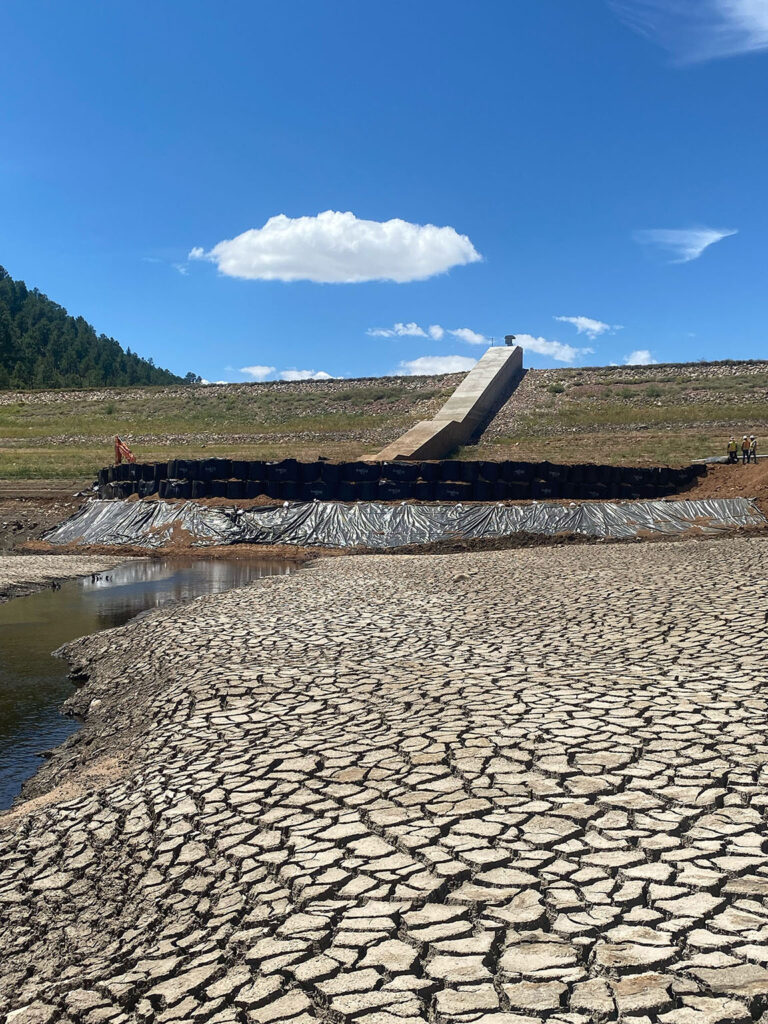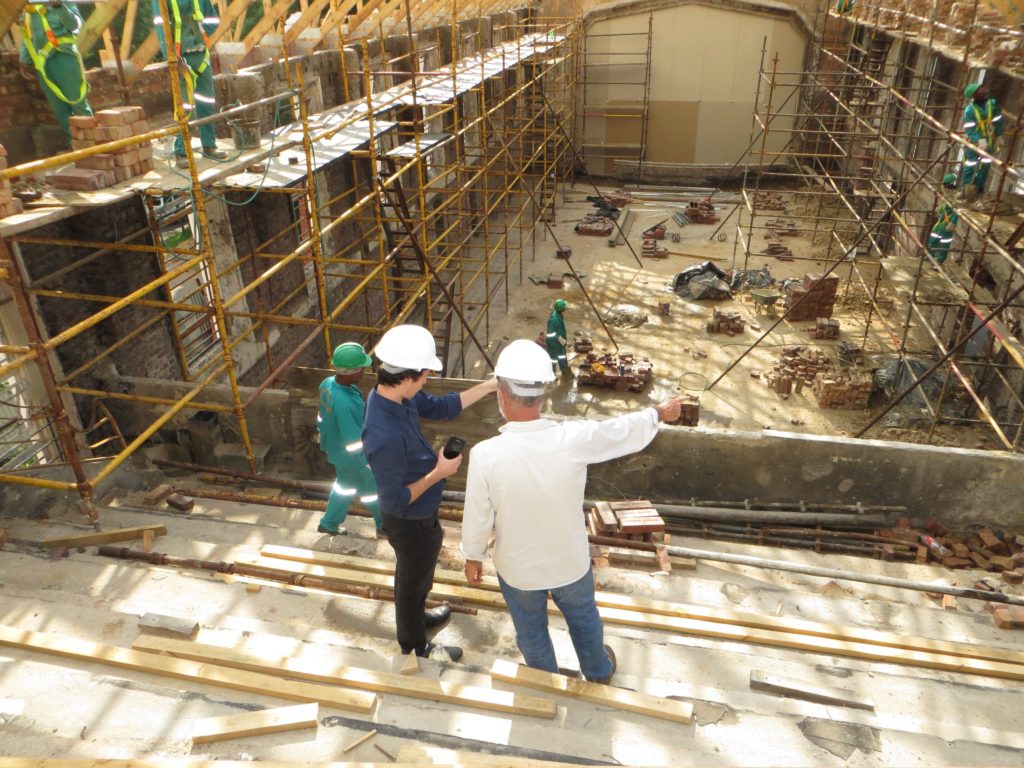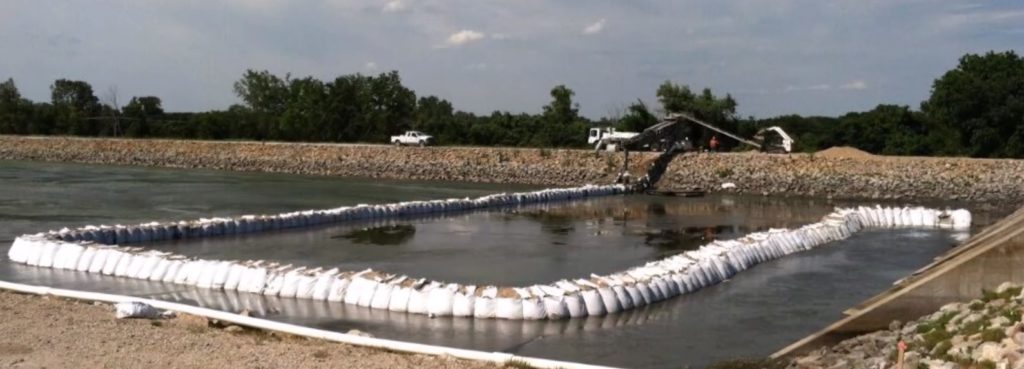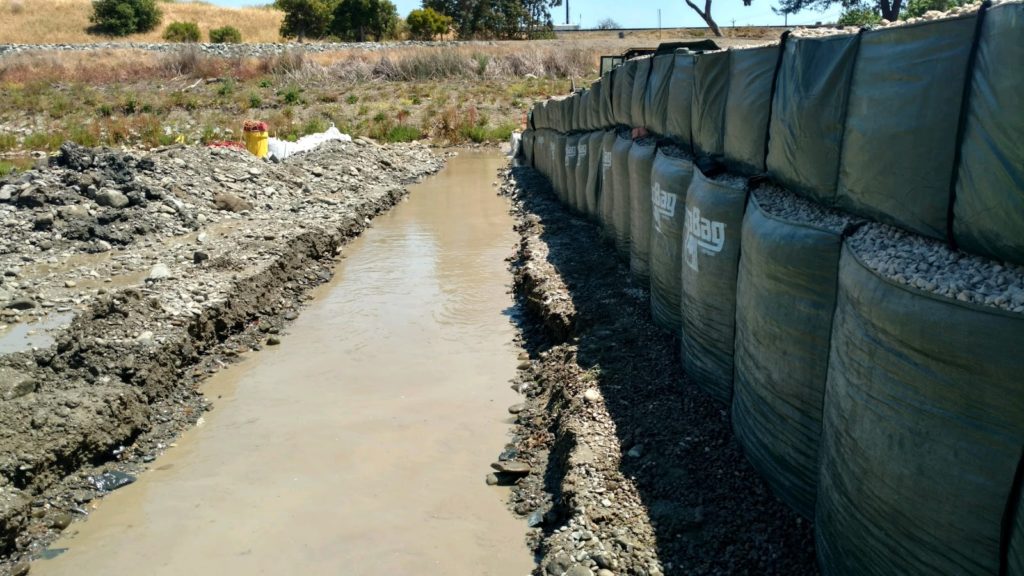TrapBag® for Construction: Cofferdams, Flood & Erosion Control
Construction sites experience flooding, erosion issues, and the need to build in bodies of water. TrapBags can help with all of that, and more.

TrapBag for the Construction Industry
TrapBag® barriers can be used in a variety of situations. When it comes to the construction industry, TrapBags are great for:
- Construction within water: In a body of water, TrapBag barriers can be arranged to act as a temporary dam, allowing the crew to continue time-sensitive work on dry ground.
- Protecting against flooding: Flooding can cause huge setbacks in construction abilities, lengthening timelines and costing money. The implementation of a TrapBag barrier ensures the site won’t be hit with detrimental flooding, allowing the project to continue as usual.
- Preventing soil erosion: There are many ways erosion can cause costly damage to a construction site, like harming the environment and increasing foundation problems. TrapBag barriers are a quick, cost-effective way to reduce erosion-related issues.
Cofferdam Construction
Cofferdams, which are temporary dikes, offer a great solution to construction areas that are under water. These watertight barriers provide a way to easily pump out the liquid to expose an area of land that requires work.
TrapBag barriers can create a variety of situation-specific cofferdams. The high-strength textile bags are connected in an accordion style fashion, preventing leaks. Even if one of the individual cells is compromised, the bags are durable enough to standalone. In most cases, they are able to be easily removed when the project is completed.
TragBag cofferdams can be used on construction sites for a few reasons, including:
- Bridges: A single-walled cofferdam is optimal in areas with moderate water levels, six or more meters. Wooden sheets, steel sheets, and sand filled TrapBag barriers make up this type of cofferdam.
- Piers: For a project involving a pier, a TrapBag braced cofferdam will be applied. Two piles alternate with laterally supportive wooden cribs, creating pockets to be filled with rocks or dirt. Before installation in the water, the frame of a braced cofferdam is constructed on land.
- Subsurface systems: Excavation on subsurface projects requires water be temporarily contained. A TrapBag cofferdam provides a flexible, sealed solution to allow for dependable construction.
- Etc.: Whatever your need, whether that be construction in an area with a more substantial amount of water (a situation requiring a double walled cofferdam) or large work area (a cellular cofferdam would work well), TrapBag barriers can be arranged in a variety of configurations to benefit your site.
How to Prevent Soil Erosion in Construction
Erosion is the continued wearing away of land due to both natural and construction-related reasons, and can be detrimental to the surrounding ecosystem. Erosion control in a construction site is necessary in maintaining a project’s structural integrity.
TrapBag can be used to prevent soil erosion on construction sites by preventing natural causes of erosion like wind and rain. By reinforcing and protecting the existing land, there is greater longevity to the construction project, and minimal interruption to the plants and animals that depend on the land.
In comparison to other forms of soil erosion prevention like retaining walls, mulch, or traditional sand bags, TrapBag barriers are a better method as they are quick to deploy, less disruptive, easy to remove, and much more cost-effective.
TrapBag Control Barriers for Construction Projects
There are many scenarios in which TrapBag might be used on a construction site to prevent soil erosion, for both commercial and residential construction projects:
- MSE walls: When natural debris (mud, rocks, or branches) go down a hill, as caused by wind, rain, or gravity, the earth may need to be mechanically stabilized. An MSE wall created from backfill and soil is fixed to another wall, reducing the chances of dangerous, crumbling debris falling on passing people or vehicles.
- Gravity walls: Another method for retaining and stabilization, a gravity wall consists of a single wall to be employed in a smaller region.
- Mudslide redirection: A debris-filled mudslide can wreak havoc on a construction site, traveling between 10–35 MPH. When placed prior to the event, TrapBag barriers can alter the course of a mudslide, protecting existing work and maintaining a clear construction zone.
- Dune stabilization: Sand dunes may seem difficult to stabilize, given the nature of their composition, but it is incredibly important to do so during construction, as dunes provide a necessary, natural erosion barrier between land and water. Positioning TrapBags at the core of the dune slows down erosion and leaves the majority of the dune intact, a much faster and durable alternative to relying on indigenous grasses or plants to steady the sand mass.
How to Protect Construction in Flood-Prone Areas
Flooding can cause catastrophic damage to a construction site, greatly increasing the project length and extending the budget. TrapBags are a great way to protect flood-prone construction zones, as they are available for rapid-deployment and can redirect water.
Permanent Flooding Protection with TrapBag
Building a beautiful home near the river? Or maybe a commercial property near a glistening lake? Either way, if you are close enough, flood protection is vital to avoiding damages and maintaining property value.
- River stabilization: Flooding can break down river banks, leading to receding property lines and dangerously unstable ground. When TrapBags are filled with cement, they are extremely durable, permanent solutions to reducing the costly effects of flooding.
- Seawalls: While some sort of barrier is essential to preventing flooding, traditional seawalls can be labor intensive and lead to property erosion. TrapBags can be used to create mound seawalls, which is less time consuming and expensive than laying heavy boulders or huge bricks, a traditional seawall method.
- Dams, dikes, levees & water barriers: These various water containment methods are all types of flood protection. Dams can be built up to prevent an area from submerging, and TrapBags can be stacked to reach whatever high is necessary. Dikes run parallel to the water, protecting the surrounding land from flooding. Temporary levees made from TrapBags are effective and property saving.
If you are in need of permanent flooding protection, TrapBag barriers are a surefire way to know you and your clients are shielded.
Emergency Flood Protection to Protect Construction Sites
Due to the rapidity of the install process, TrapBags are great solutions for emergency or temporary flood protection.
- Stormwater containment: When it comes to preserving the condition of the land and water sources that surround a construction site, stormwater can pose a big threat. When flowing through a work zone, the stormwater can pick up chemicals and harmful debris, eroding the ground before depositing in a nearby water source or it is absorbed into the ground. It is the responsibility of the construction team to employ emergency flood protection to minimize the negative effects of polluted stormwater, and TrapBag is a quick and efficient way to do so.
- Spill control: If your site experiences an oil spill, it needs to be contained, stat. The environmental protection agency provides a mandatory plan for spill prevention, control, and countermeasure (SPCC) for such events. TrapBags are an easy, rapid-deploy solution for this extremely time sensitive task.
Protect Your Construction Site with TrapBag
TrapBag barriers are a dependable, durable way to keep your construction site functioning and thriving, no matter the weather event or project-related task. Send us a message to find out more about utilizing TrapBag on your site.
Get the Dirt Before the Flood Hits
Stay ahead of flooding, erosion, and disaster response challenges. The Dirt, TrapBag’s monthly newsletter, delivers field-tested tips, real-world case studies, and the latest in barrier technology straight to your inbox.



